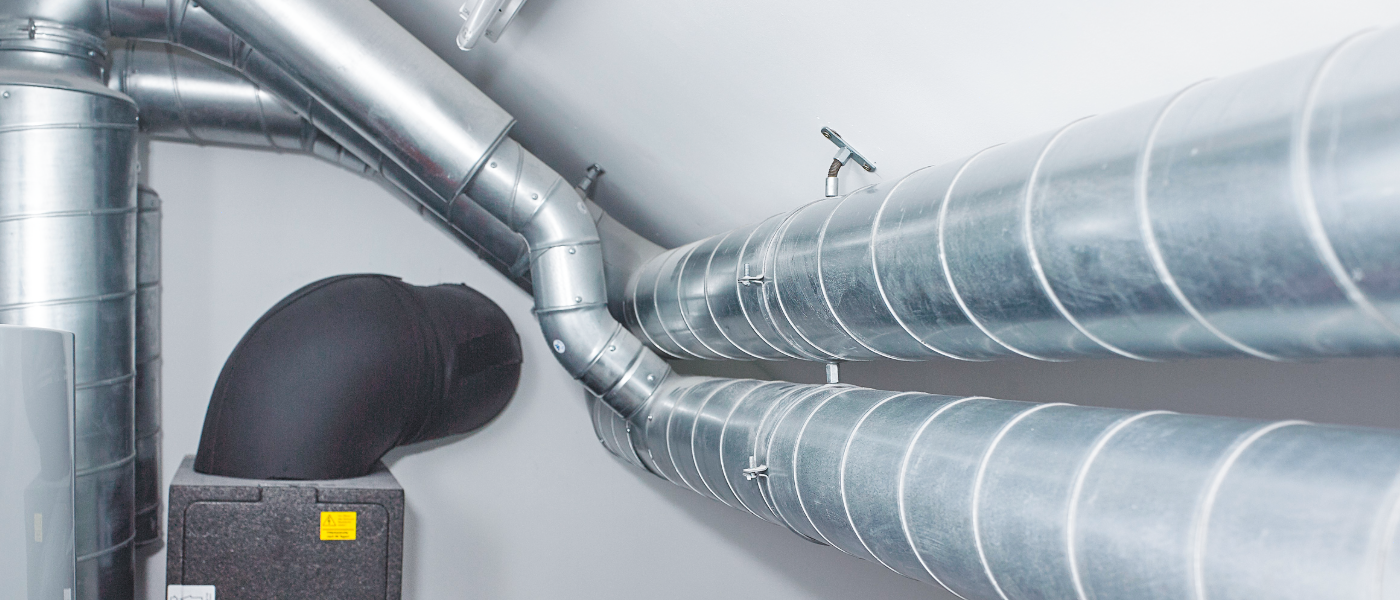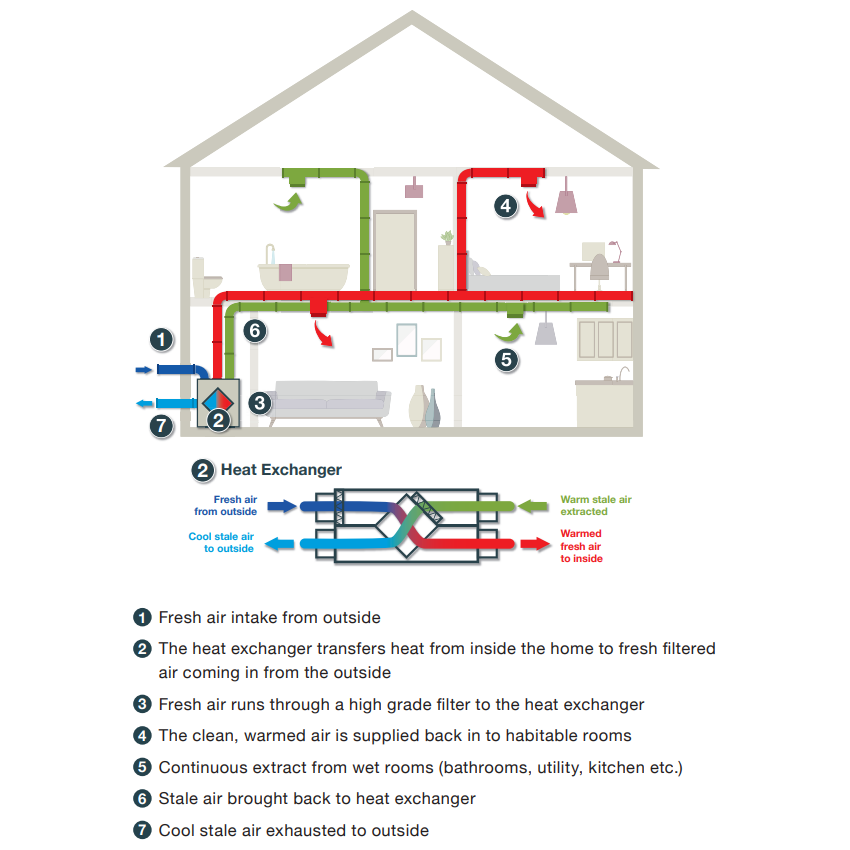Can an MVHR System Be Used for Cooling?

The majority of overheating risk in UK properties is due to solar gain through large, south-facing glazing. The very best approach is to design out overheating in the first place.
If you are beyond the design stage and are experiencing overheating in a building, there is still a lot that can be done to improve the shading strategy without the need for an active cooling system. Read our blog outlining the various shading strategies open to you.
MVHR as Cooling
MVHR (Mechanical Ventilation with Heat Recovery) provides fresh, filtered air into a building, as well as transferring heat or 'coolth' between incoming and outgoing air. On colder days, the heat exchanger within the MVHR unit transfers heat from the air leaving the building into the incoming air. On hot days, the heat exchanger works in reverse, with coolth transferred from the cooler inside air to help cool the incoming outside air.
So, MVHR can provide some minimal cooling capacity. The technology exists to introduce additional cooling to MVHR systems; however, it is not always that effective a solution.

Low Air Volumes With MVHR
The reason cooling isn't very effective through the MVHR system is not down to the technology; it is down to the nature of air and heat/coolth. Air does not have a great heat/coolth carrying capacity, so if a space is to be cooled by air, an awful lot of air needs to be supplied to that space.
However, MVHR systems are designed to work using a low volume of air. The volume of air that an MVHR system supplies may be much lower than the volume of air potentially overheating in that room. An MVHR system typically provides boost air flow rates of 0.5 air changes per hour to provide fresh, good air quality. To provide effective cooling to a space, you typically need around 2 air changes per hour, which is almost four times the standard MVHR air flow rates.
To use MVHR for extensive cooling would, therefore, require the supply of much, much more air, requiring industrial-sized MVHR units, larger ducts, larger silencers, insulated ducting etc. – something not that feasible in domestic situations and certainly not cost-effective! One of the purposes of an MVHR system is to reduce energy consumption, so turning it into an inefficient cooling system is counterintuitive.
It is also worth noting that MVHR ventilation with integrated cooling systems cannot be zoned as to which areas will be cooled. It is effectively a large, centralised single ventilation zone. This very rarely matches the cooling requirements of the building, as rooms with south-facing glazing will need significantly more cooling and those with north-facing glazing, less.

Where MVHR is Suitable for Cooling
However, in some cases, MVHR with additional cooling can be a very effective and efficient cooling solution:
- Situations where there is a very low cooling load to match low air flow rates and a very even cooling load between rooms. If you have a well-designed building, such as a Passivhaus, with a very low risk of overheating but you want to pre-cool the air during occasional extreme temperatures, then cooling through the MVHR system might be an option.
- Small properties with only a few rooms where single-zone cooling can meet the varied cooling demands.
Enhancing MVHR Cooling with Water-Based Solutions
For situations where a little more cooling is desired, a water-based solution can be integrated with your MVHR system. Similar to the way a radiator works, a cooling coil on the MVHR ducting can receive a cold water supply from, for example, a reversible air source heat pump. The supply air on the MVHR system will run over this coil and cool the air.
Active Cooling Systems
If you have a building where overheating is a problem and it cannot be designed out with a fabric-first approach – such as looking at building orientation, window sizes and orientation, and external solar shading – then an active cooling system is likely to be required.
This could take the form of a traditional air conditioning system or the use of fan coils in the ceilings of rooms where there is overheating. It is possible to use such systems alongside MVHR systems without affecting the performance of the MVHR system. Internal heat gains from people, lighting, appliances, and cooking all vary significantly in each room, so recirculating fan coils cooling single rooms are often the most effective use of active cooling.
If you have any more MVHR system questions, or if you have any other enquiries that we can help with, contact 21 Degrees today.







